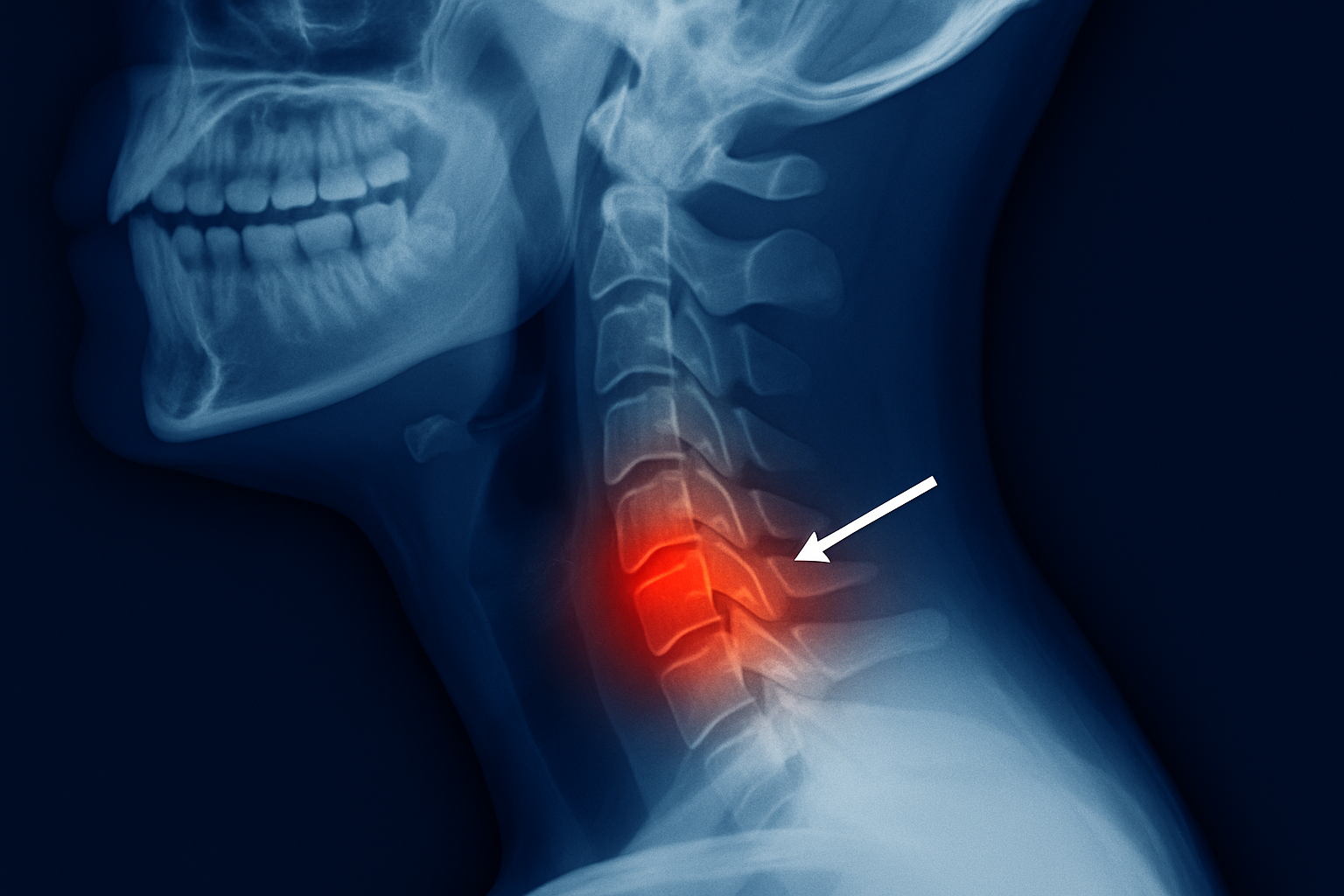Dangers of Spinal Cord Fracture in a Car Accident
On behalf of Harper, Evans, Hilbrenner & Netemeyer

A spinal cord fracture isn’t just a painful injury. It can change your entire life in seconds. According to the National Spinal Cord Injury Statistical Center (NSCISC), vehicle crashes and falls account for almost 70% of recent spinal cord injuries in the U.S.
In Missouri, the Department of Health & Senior Services reported that in 2022, 1,057 people were killed in traffic crashes, with an additional 14,316 injured. While specific data on spinal cord injuries from these incidents is not detailed, the high number of serious injuries suggests a significant impact on spinal health statewide.
If you or someone close to you suffered a spinal cord fracture in a car accident, this isn’t just a medical issue. It’s a legal one. These injuries often lead to expensive treatment, job loss, and long-term disability. Knowing your rights can make a huge difference.
What is a Spinal Cord Fracture?
A spinal cord fracture refers to a break or crack in the vertebrae that puts pressure on or damages the spinal cord. This is different from a simple broken back. Damage to the spinal cord disrupts the messages between the brain and the rest of the body.
Common types of spinal cord fractures:
- Compression fractures: A vertebra collapses under pressure, sometimes crushing the spinal cord. Common in rollovers or rear-end collisions.
- Burst fractures: The vertebra shatters into fragments that push into the spinal canal. Often occurs in head-on collisions at high speed.
- Flexion-distraction fractures: The spine is pulled apart rapidly, which can happen when a passenger is wearing only a lap belt during a crash.
- Fracture-dislocations: A combination of bone fracture and joint dislocation. This often results in spinal cord misalignment and severe damage.
Severity depends on the type of fracture and whether the spinal cord is partially or fully compromised.
Levels of injury:
- Cervical (neck) injuries can lead to quadriplegia, or full-body paralysis.
- Thoracic (upper back) injuries may cause paraplegia, or loss of movement in legs and lower body.
- Lumbar and sacral injuries typically impact bowel, bladder, and leg function.
These aren’t just technical terms. They are the difference between walking and never walking again, between feeding yourself and needing round-the-clock assistance.
Warning Signs After a Crash
Many spinal cord injuries go unnoticed in the immediate aftermath of an accident. That’s because the symptoms can be masked by shock and adrenaline. Watch for:
- Sudden, sharp neck or back pain
- Loss of movement or strength in any part of the body
- Numbness, tingling, or burning sensations in arms, hands, legs, or feet
- Loss of coordination or balance
- Difficulty breathing
- Problems with bladder or bowel control
Even a minor crash can cause enough force to damage the vertebrae. If you feel anything unusual, do not ignore it. Go to the ER and request a spinal imaging scan such as an MRI or CT scan.
Getting checked immediately helps with treatment. It also creates a medical record that supports your legal claim.
Long-Term Health Impacts of a Spinal Cord Fracture
A spinal cord fracture isn’t just a broken bone. It is a break in how your body functions. Recovery can take months or years, and full recovery is rare. Physical effects:
- Paralysis: Complete or partial loss of movement depending on the injury level
- Chronic pain: Especially common with incomplete injuries
- Muscle atrophy: Muscles shrink from disuse
- Respiratory problems: Particularly with cervical injuries
- Incontinence: Loss of control over bladder or bowel
- Pressure ulcers: From prolonged immobility
Emotional and psychological effects:
- Depression from loss of independence
- Anxiety about future care or finances
- Post-traumatic stress, especially in crash survivors
- Isolation and social withdrawal
The average cost for the first year of treatment for someone with quadriplegia is $1.2 million, according to the NSCISC. Lifetime costs often exceed $5 million. That does not count lost wages, careers cut short, or the emotional toll on families.
Treatment and Recovery of Spinal Cord Fractures
Treatment starts with spinal immobilization at the crash scene. Once in a trauma center, next steps include:
- Surgical decompression to relieve spinal cord pressure
- Spinal fusion using rods, screws, or bone grafts
- Steroid therapy to reduce swelling
- Rehabilitation therapy, including physical, occupational, and speech therapy
- Assistive technology, such as wheelchairs, braces, or motorized beds
Recovery timelines vary:
- Mild fractures may heal in 6 to 12 weeks with rest and a brace
- Moderate to severe cases may require multiple surgeries and months of rehabilitation
- Severe fractures with cord damage often result in permanent disability
Missouri Laws on Spinal Cord Injuries from Car Accidents
If another driver caused the accident that led to your spinal cord fracture, Missouri law gives you the right to file a personal injury claim.
Legal basics:
- Statute of Limitations: You have five years from the date of injury to file a lawsuit
- Comparative Fault Rule: Missouri allows you to recover damages even if you were partially at fault. If you're 30% responsible, your compensation is reduced by that percentage
Damages you may recover:
- Emergency room and hospital bills
- Rehabilitation and future medical care
- Wheelchair-accessible modifications to your home
- Lost wages and diminished earning capacity
- Pain, suffering, and mental distress
- Loss of companionship and caregiving costs
These cases require strong evidence and expert support. A qualified personal injury lawyer can help build a case that reflects the full impact of your injury.
Legal Process Breakdown
Spinal cord fracture cases involve more than filling out paperwork. They require strategy, documentation, expert input, and time. Here’s a detailed look at what happens when you work with a personal injury attorney:
1. Initial Consultation
Your first meeting is free. During this step, your attorney will:
- Listen to how the crash happened
- Review your medical records and imaging reports
- Look at any crash reports or witness statements you’ve already gathered
- Explain your legal rights in plain terms
- Estimate your case’s potential value, based on early information
You don’t need to have every detail figured out before this step. Just bring what you have.
2. Evidence Gathering
Once you decide to move forward, your legal team begins a thorough investigation. This includes:
- Requesting complete medical records and billing statements
- Gathering MRI or CT scans that show the spinal damage
- Reviewing crash scene photos and police reports
- Interviewing witnesses or first responders
- Consulting specialists such as spinal surgeons, neurologists, or rehab professionals
- In some cases, hiring accident reconstruction experts
The goal is to prove who was at fault, how severe the injury is, and how it will affect your future.
3. Claim Valuation
Spinal cord injuries often involve long-term care. Your attorney will work with medical experts and life-care planners to calculate:
- Current and future medical expenses
- Lost income and reduced earning ability
- Home or vehicle modifications (like wheelchair ramps or lifts)
- Personal care needs, including in-home nursing or aides
- Pain and suffering, emotional distress, and loss of enjoyment of life
This isn’t guesswork. It’s a detailed financial projection that accounts for every cost the injury may create.
4. Filing the Claim
Once your injuries stabilize and treatment is underway, your lawyer prepares a formal demand letter. This is sent to the at-fault driver’s insurance company and includes:
- A summary of the crash
- Evidence of fault and liability
- A detailed outline of your injuries and treatment
- The full calculation of damages, with supporting documentation
The insurance company then has a set amount of time to respond, usually within 30 days.
5. Negotiation or Litigation
Most spinal injury cases settle out of court, but it takes negotiation. Your lawyer will:
- Handle all communication with the insurer
- Push back against lowball offers or attempts to shift blame
- Negotiate a settlement that covers the full impact of your injuries
- If a fair offer isn’t made, your lawyer may file a lawsuit. This leads to formal litigation, which includes:
- Discovery (exchange of evidence)
- Depositions (sworn interviews)
- Court motions and hearings
If needed, your case may go to trial where a judge or jury will decide the outcome.
6. Resolution
The case ends when you receive a settlement or court award. If you win, the payment may come in a lump sum or structured over time, depending on the agreement.
Throughout this process, your attorney handles the legal burden so you can focus on treatment, recovery, and daily life. You’re not expected to manage this alone.
You Don’t Have to Face a Spinal Cord Fracture Alone
If you're dealing with a spinal cord fracture after a car accident, don’t handle it alone. The impact can be lifelong. Legal support can help secure your future and hold the right people accountable.
Harper, Evans, Hilbrenner & Netemeyer is here to help. We’ve represented clients throughout Missouri in complex personal injury cases involving spinal injuries.
We understand the medical challenges. We know the insurance tactics. And we’re ready to build your case with the detail and care it deserves.
Contact Harper, Evans, Hilbrenner & Netemeyer Today
If you or someone you care about suffered a spinal cord fracture in a car accident, call us today. We offer a free, no-obligation consultation.
Let us explain your rights and what your next steps should be. We’ll handle the legal side so you can focus on recovery.
Contact Harper, Evans, Hilbrenner & Netemeyer now. Get the answers and the legal support you need.

